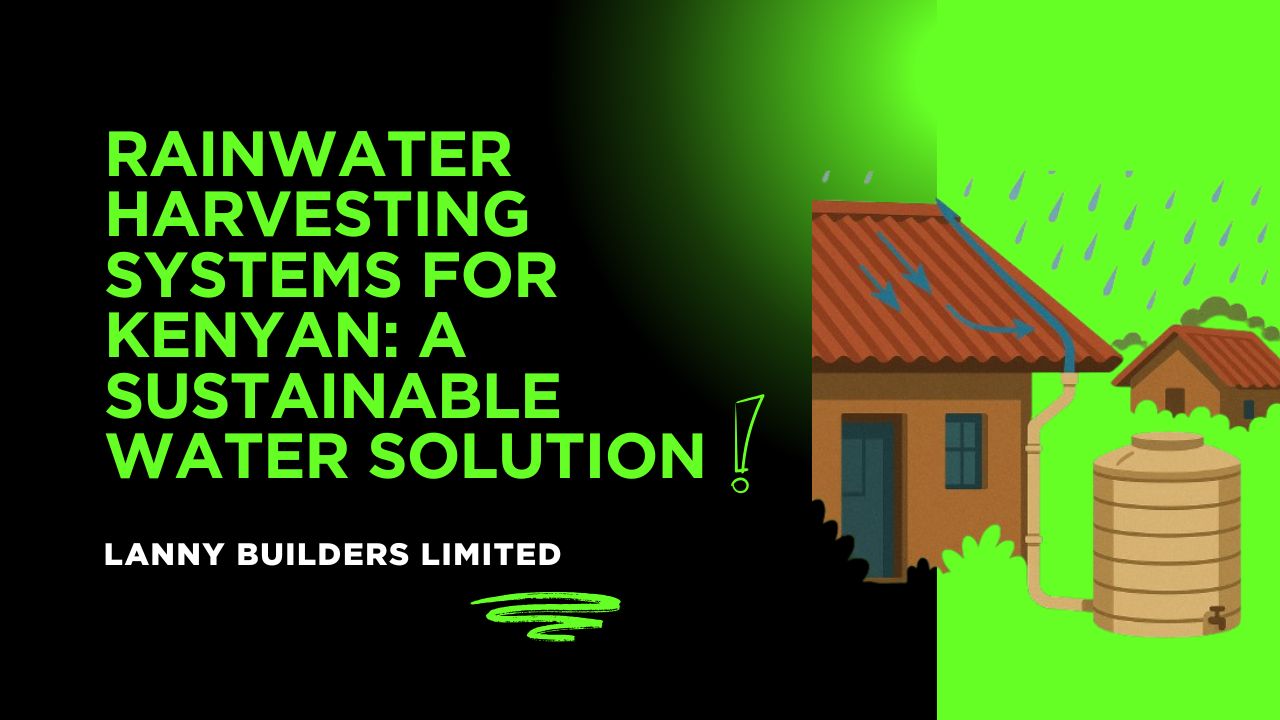Water scarcity is a pressing issue across Kenya, especially during dry seasons when water rationing becomes common in Nairobi, Machakos, and other counties. Rainwater harvesting (RWH) is emerging as a smart, eco-friendly, and cost-effective solution that homeowners across urban and rural areas are adopting to reduce dependency on municipal supplies and secure reliable water access.
This article delves deep into how rainwater harvesting works, system options, installation tips, benefits, and practical considerations tailored for Kenyan households in 2025.
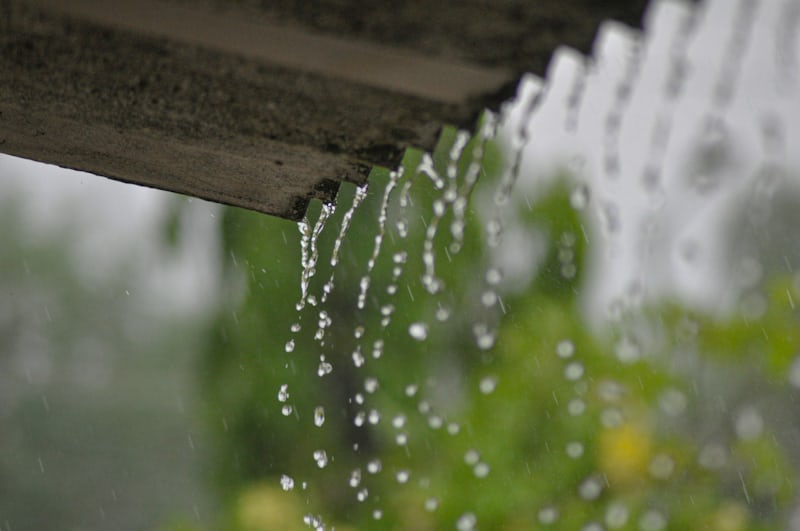
Why Rainwater Harvesting Makes Sense in Kenya
Kenya’s climate features bimodal rainfall patterns, with long rains (March-May) and short rains (October-December). While rainfall distribution varies across regions, many parts of the country receive enough precipitation annually to make rainwater harvesting viable.
By collecting rainwater from rooftops and other surfaces, households can:
- Supplement water supply for non-potable uses such as gardening, washing, and flushing toilets
- Reduce pressure on municipal water systems, lowering bills and conserving water
- Create resilience during droughts or supply interruptions
- Harvest clean water, especially where boreholes or rivers are unavailable
Counties like Kiambu, Nakuru, and Nyeri are promoting RWH through incentives and technical support, aligning with Kenya’s national water conservation goals.
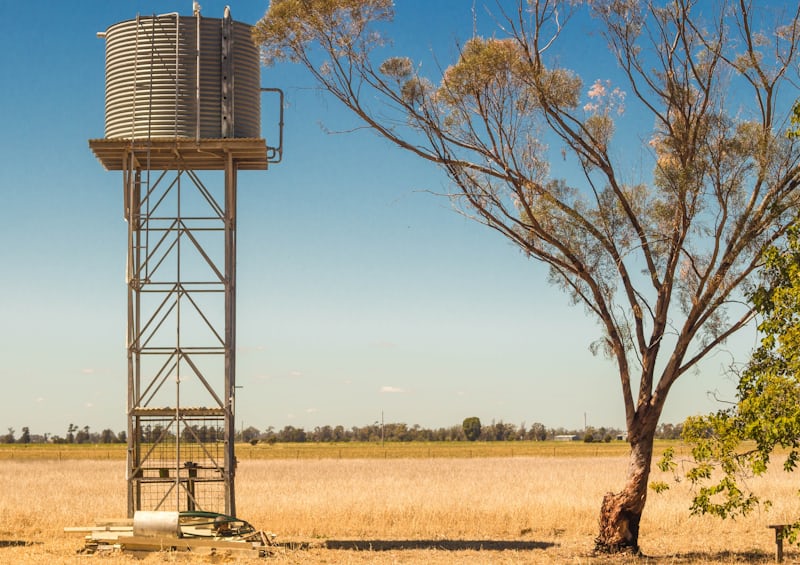
Components of a Typical Rainwater Harvesting System
A basic RWH system consists of:
- Catchment Surface
This is typically your roof. Roofing materials should be clean and non-toxic (e.g., metal sheets, tiles). Corrugated iron sheets are common in Kenya and effective catchments. - Gutters and Downpipes
These channel rainwater from the roof to storage tanks. It’s important to install leaf guards and first-flush diverters to remove debris and initial contaminants. - Storage Tanks
Storage options range from small plastic tanks (1,000–5,000 liters) to larger ferrocement or concrete tanks. The tank must be covered to prevent mosquito breeding and contamination. - Delivery System
Water can be drawn via gravity or pumps. Simple hand pumps or electric pumps circulate water to the house or garden. - Filtration and Treatment (optional)
For potable use, filtering and disinfecting rainwater is necessary. Basic filters, UV treatment, or chlorination systems can be installed depending on water quality needs.

Rainwater Harvesting System Options Suitable for Kenyan Homes
- Basic Plastic Tank System
This is the most common and affordable system. It includes gutters leading to a plastic tank (e.g., Rhino or Sintex) with a tap at the bottom. It is suitable for garden irrigation, car washing, and laundry. - Ferrocement Tanks
Made locally by artisans, these tanks are durable and affordable. They can be built underground or above ground, helping to save space. - Roofwater-fed Drip Irrigation
This system combines rainwater harvesting with drip irrigation for vegetable gardens. It’s water-efficient and supports urban farming in Nairobi or Nakuru. - Integrated Solar-Powered Pump Systems
Ideal for larger homes or institutions, solar panels power pumps to distribute water inside the home or to gardens. Though initially costly, they cut running costs.
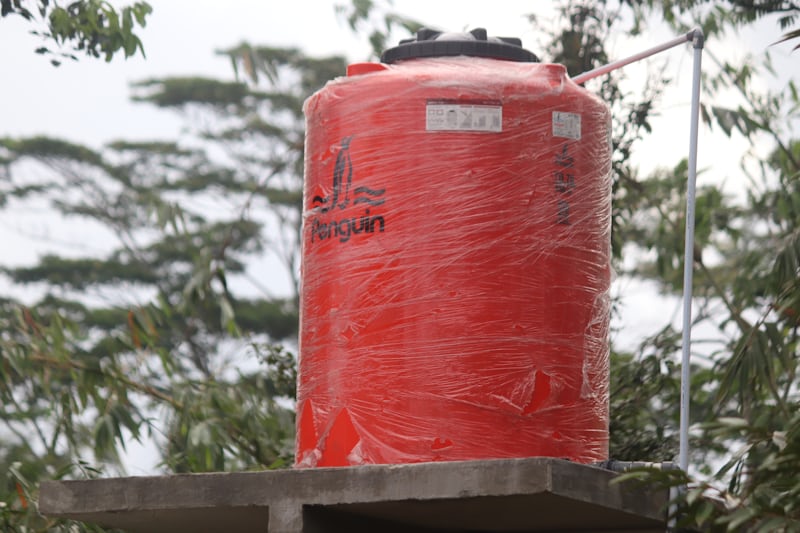
How Much Water Can You Collect?
Estimating potential harvest helps size your system properly. Use this formula:
Harvestable Water (litres) = Roof Area (m²) × Rainfall (mm) × Runoff Coefficient
- Typical runoff coefficient for metal roofs = 0.8
- Average annual rainfall in Nairobi ~ 900 mm, Kisumu ~ 1,100 mm
For a 100 m² roof in Nairobi:
100 × 900 × 0.8 = 72,000 liters per year
This volume can cover non-potable household uses for several months if stored and used efficiently.
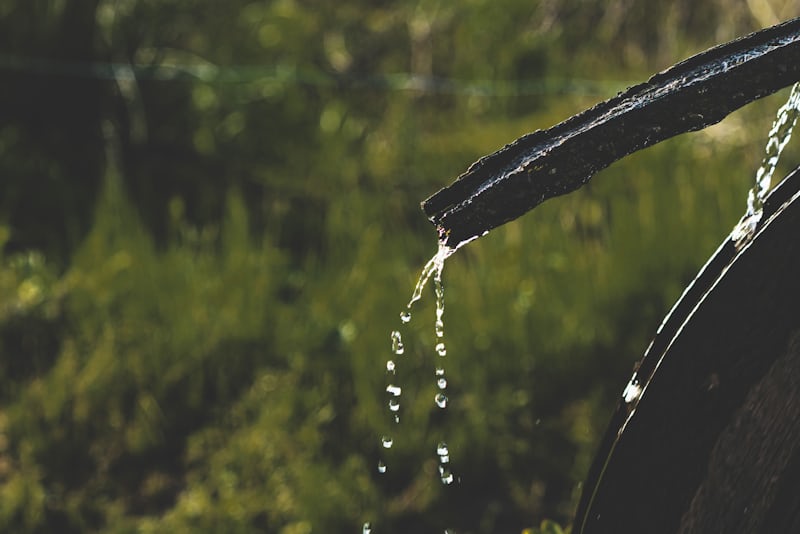
Installation Considerations for Kenyan Homeowners
- Roof Material Quality
Avoid roofs with asbestos sheets or lead-based paints. These can contaminate water and harm health. - Tank Placement
Place tanks close to downpipes and on firm, level ground. Ensure ease of access for cleaning and maintenance. - First Flush Diverters
Install to divert the first 2–3 mm of rain, which carries most dust and bird droppings away from tanks. - Mosquito-proofing
Cover tanks and pipes tightly to prevent mosquito breeding, which can spread diseases like malaria. - Regular Maintenance
Clean gutters and tanks every 3–6 months to avoid algae and blockages.
Benefits of Rainwater Harvesting for Kenyan Homes
- Financial Savings
Lower water bills and reduced reliance on water vendors save money, especially during rationing. - Water Security
Stored rainwater provides a buffer during dry spells, reducing household stress. - Environmental Impact
Harvesting reduces stormwater runoff, preventing erosion and flooding. - Improved Hygiene and Health
Access to clean water supports sanitation, reducing disease risk.

Challenges and How to Overcome Them
- Initial Costs
Plastic tanks, gutters, and installation can be costly. Government subsidies and microloans are increasingly available. - Quality Control
Without filtration, rainwater may not be safe to drink. Educate yourself on proper treatment methods. - Space Constraints
Urban homes with limited yards may need vertical tanks or underground storage.
Local Government Support and Regulations
Many counties encourage RWH by waiving certain permit fees or providing technical advice. Check with your local county water department to learn about programs and guidelines for installation.
Conclusion
Rainwater harvesting is a practical, sustainable, and increasingly accessible way to improve water security for Kenyan households. Whether in urban Nairobi or rural Machakos, installing a rainwater harvesting system saves money, conserves resources, and supports resilience in a changing climate.
With careful planning, proper materials, and regular maintenance, homeowners can harness the abundant rainfall and turn it into a reliable water source all year round.
